World Natural Heritage
1. Ha Long Bay
 |
The bay covers a total area of 1553 km2 and comprises 1969 islands of varying sizes, concentrated in two main areas: the southeastern part of Bai Tu Long Bay and the southwestern part of Ha Long Bay. Hundreds of rocky islands, each with a unique and vivid shape, include: Human Head Island, Dragon Island, La Vong Island, Sail Island, Rooster and Hen Island, Incense Burner Island, and many more.
In 1994, UNESCO officially recognized Ha Long Bay as a World Natural Heritage Site for its exceptional scenic value. In 2000, Ha Long Bay was recognized for the second time by UNESCO as a World Geological Heritage Site for its geological and geomorphological values.
2. Phong Nha – Ke Bang National Park
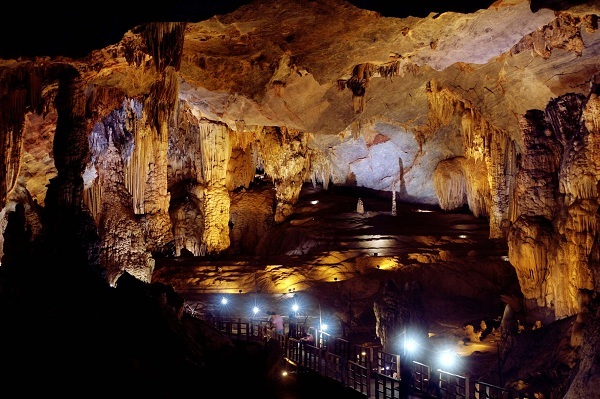 |
Phong Nha – Ke Bang National Park is located in Quang Binh province, central Vietnam, with a total area of 343,300 hectares. Besides its historical, geological, topographical, and geomorphological value, Phong Nha – Ke Bang is also blessed with mysterious and majestic landscapes, most notably Son Doong Cave – the world's largest natural cave.
Phong Nha – Ke Bang National Park was recognized by UNESCO as a World Natural Heritage Site based on geological and geomorphological criteria in 2003, and was recognized a second time by UNESCO as a World Natural Heritage Site based on biodiversity and ecological criteria on July 3, 2015.
3. Dong Van Karst Plateau
 |
The Dong Van Karst Plateau (or Dong Van Mountain Plateau) is a vast rocky plateau spanning four districts: Quan Ba, Yen Minh, Dong Van, and Meo Vac in Ha Giang province, Vietnam. On October 3, 2010, the dossier "Dong Van Karst Plateau Geopark" was officially recognized as a Global Geopark by the Advisory Council of the UNESCO Global Geopark Network (GGN). This is currently the only such designation in Vietnam and the second in Southeast Asia.
World Heritage Sites
4. Complex of Monuments of the Hue Imperial City
 |
The Hue Imperial Citadel Complex, or simply the Hue Monuments Complex, comprises historical and cultural relics built by the Nguyen Dynasty between the early 19th and the first half of the 20th centuries in the former imperial capital of Hue, now located within Hue city and some surrounding areas in Thua Thien-Hue province, Vietnam. Most of these relics are now managed by the Hue Imperial Citadel Conservation Center and were recognized as a UNESCO World Heritage Site on December 11, 1993.
5. Hoi An Ancient Town
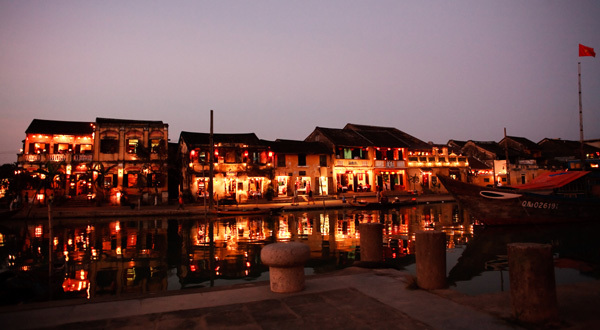 |
The ancient town of Hoi An today is a remarkable example of a traditional port city in Southeast Asia that has been meticulously and thoroughly preserved. Most of the houses here are traditional structures dating from the 17th to 19th centuries, arranged along narrow streets. Hoi An also bears the imprint of a blend and intermingling of cultures. Assembly halls and temples bearing traces of the Chinese community stand alongside traditional Vietnamese townhouses and houses with French architectural styles.
With its outstanding values, at its 23rd session on December 4, 1999, UNESCO recognized the ancient town of Hoi An as a World Heritage Site.
6. My Son Sanctuary
 |
My Son Sanctuary, located in Duy Phu commune, Duy Xuyen district, Quang Nam province, is a complex of Cham temples and shrines situated in a valley approximately 2 km in diameter, surrounded by hills and mountains. Historically, it served as a site for religious ceremonies and the burial place of Cham kings, princes, and royal relatives.
In 1999, My Son Sanctuary was selected by UNESCO as one of the modern and contemporary world heritage sites.
7. Thang Long Imperial Citadel
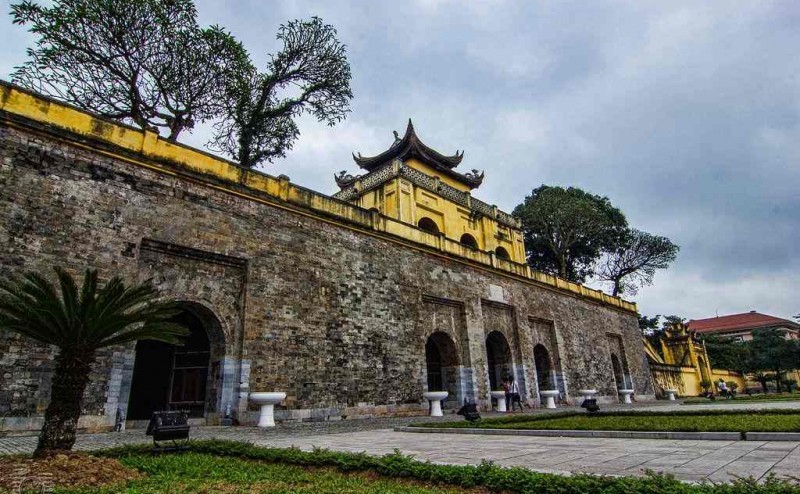 |
The Thang Long Imperial Citadel is a complex of historical relics associated with the history of Thang Long – Dong Kinh and Hanoi province, beginning from the pre-Thang Long period (An Nam Protectorate in the 7th century) through the Dinh – Early Le dynasties, flourishing under the Ly, Tran, and Le dynasties, and becoming Hanoi under the Nguyen dynasty. This is a massive architectural work, built by various emperors over many historical periods, and has become one of the most important historical sites in Vietnam.
On July 31, 2010, UNESCO adopted a resolution recognizing the Thang Long Imperial Citadel – Hanoi as a World Heritage site.
8. Ho Dynasty Citadel
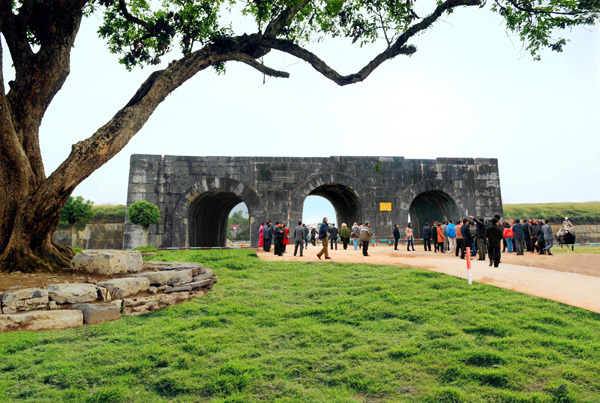 |
Ho Citadel, now located in Thanh Hoa province, is a fortified citadel with unique and large-scale stone architecture, a rare sight in Vietnam. On June 27, 2011, after six years of submitting the application, Ho Citadel was recognized by UNESCO as a World Heritage Site.
Intangible cultural heritage
9. Hue Royal Court Music
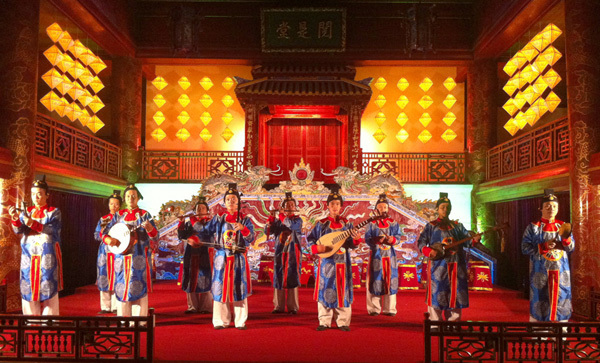 |
Hue Royal Court Music is a genre of music from the feudal court, performed on ceremonial occasions (coronation, death, and other solemn festivals) throughout the year during the Nguyen Dynasty of Vietnam. Hue Royal Court Music was recognized by UNESCO as a Masterpiece of Oral and Intangible Heritage of Humanity in 2003.
10. The Gong Culture Space of the Central Highlands
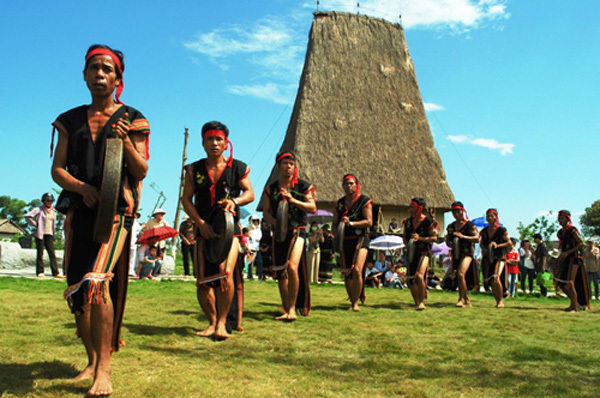 |
The Gong Culture Space of the Central Highlands was recognized by UNESCO as a Masterpiece of Oral and Intangible Heritage of Humanity on November 15, 2005. After Hue Royal Court Music, this is the second intangible cultural heritage of Vietnam to receive this title.
The cultural space of the Central Highlands Gong Music includes the following components: gongs, musical pieces played on gongs, gong players, festivals that utilize gongs (New Rice Festival, Water Source Worship Ceremony, etc.), and the locations where these festivals are held (longhouses, communal houses, gươl houses, fields, water sources, burial grounds, forests near Central Highlands villages, etc.).
11. Quan Ho folk songs
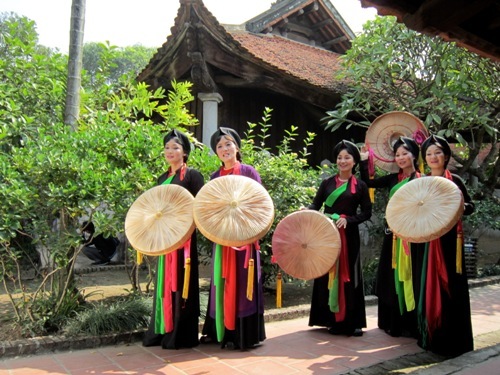 |
Quan Ho folk songs from Bac Giang and Bac Ninh are one of the typical folk song styles of the Red River Delta region in Northern Vietnam. It is also known as Kinh Bac Quan Ho folk songs because it originated and developed in the ancient Kinh Bac cultural region, especially in the area bordering the present-day Bac Giang and Bac Ninh provinces. On September 30, 2009, UNESCO officially recognized Quan Ho as an intangible cultural heritage of the world.
12. Ca trù
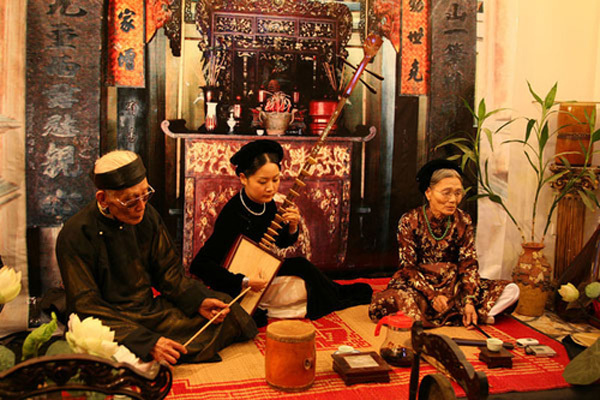 |
Ca Tru singing is a traditional art form in Northern Vietnam[1] that combines singing with some traditional musical instruments. Ca Tru flourished from the 15th century, was once a type of court singing and was loved by the nobility and intellectuals. Ca Tru is a harmonious and sublime combination of poetry and music.
On October 1, 2009, at the 4th session of the Intergovernmental Committee of the UNESCO Convention for the Protection of Intangible Cultural Heritage (from September 28 to October 2, 2009), Ca Tru was recognized as an intangible heritage in need of urgent safeguarding.
13. Giong Festival
 |
The Giong Festival is a traditional festival held annually in many localities in Hanoi to commemorate and celebrate the heroic deeds of the legendary hero Saint Giong, one of the four immortals in Vietnamese folk beliefs. In 2010, the Giong Festival at Phu Dong Temple (Gia Lam) and Soc Temple (Soc Son district) was recognized by UNESCO as an intangible cultural heritage of humanity.
14. Phu Tho Xoan Singing
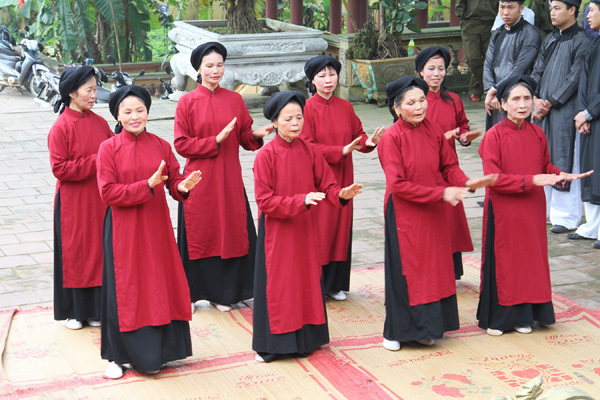 |
Xoan singing, also known as Khuc Mon Dinh (singing at the temple gate), is a style of singing dedicated to deities, traditionally believed to have originated during the time of the Hung Kings. In ancient times, the people of Van Lang organized Xoan singing performances in the spring to welcome the new year.
In 2011, Xoan singing was recognized by UNESCO as an intangible cultural heritage of humanity.
15. The Hung Kings worship belief
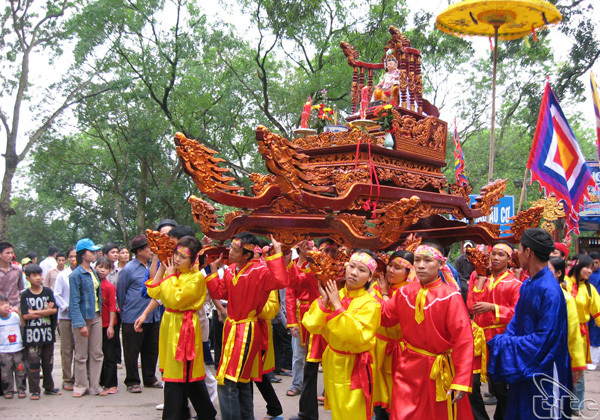 |
The Hung Kings worship belief is a long-standing folk belief system in Vietnam, centered in Phu Tho province. This belief system was inscribed on the National List of Intangible Cultural Heritage (first phase) by the Vietnamese Ministry of Culture, Sports and Tourism and recognized by UNESCO as a Representative Intangible Cultural Heritage of Humanity in 2012.
16. Traditional Southern Vietnamese Music and Singing
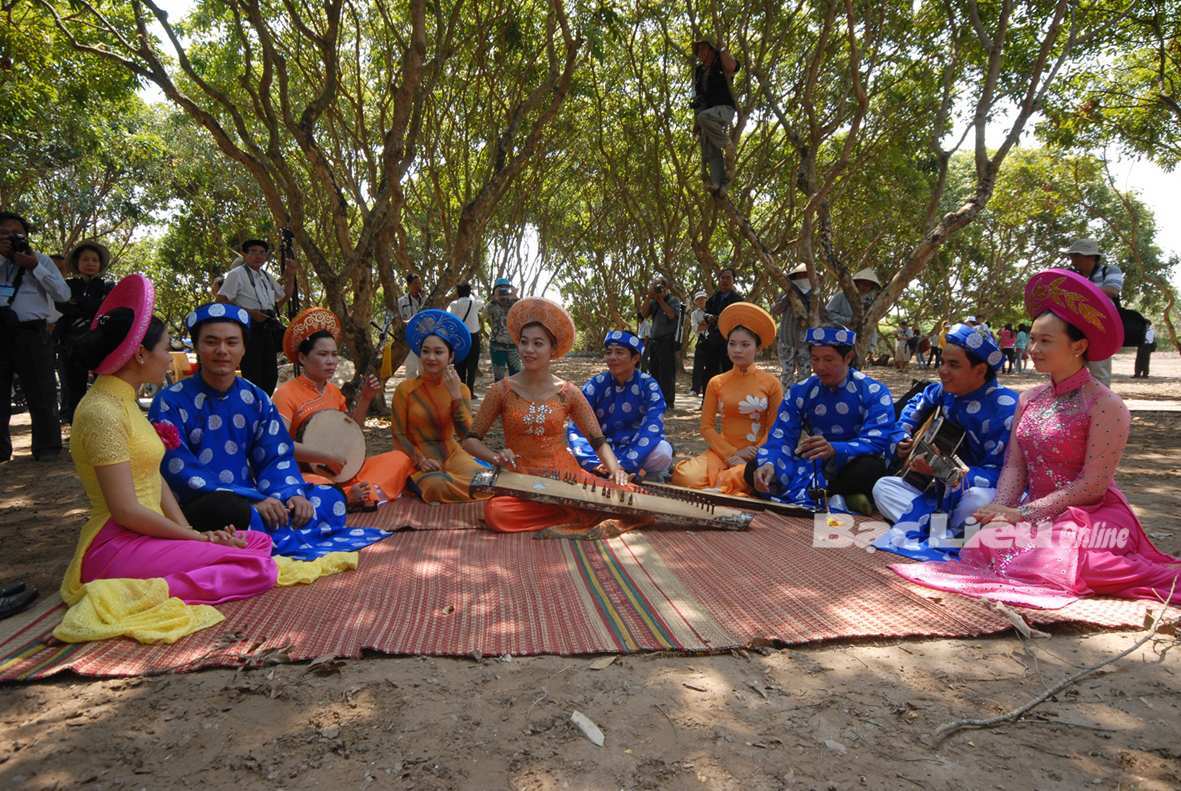 |
Southern Vietnamese folk music (Đờn ca tài tử Nam bộ) is a genre of Vietnamese folk music that was recognized by UNESCO as an intangible cultural heritage in 2013. Đờn ca tài tử originated and developed from the late 19th century, drawing inspiration from ceremonial music, Hue royal court music (Nhã nhạc), and folk literature.
17. Nghe Tinh Folk Song
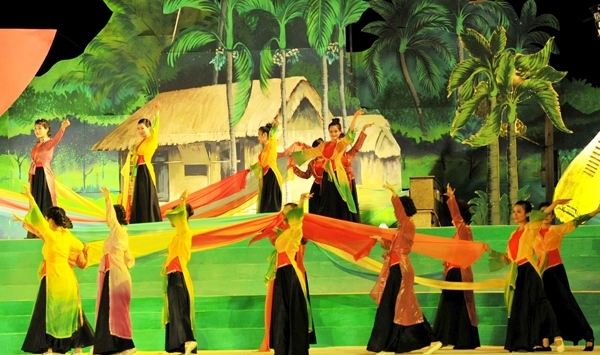 |
Ví and Giặm folk songs of Nghe Tinh are a type of folk performance art that holds an important place in the cultural life of the people of Nghe An and Ha Tinh provinces in Central Vietnam. Ví and Giặm folk songs were recognized by UNESCO as an intangible cultural heritage on November 27, 2014, in Paris (France).
World Documentary Heritage
18. Woodblock prints from the Nguyen Dynasty
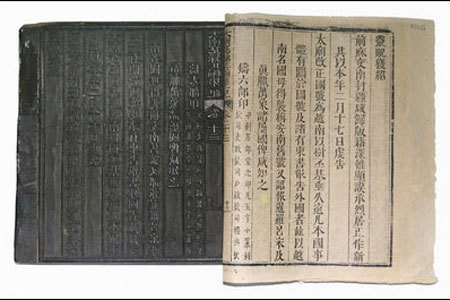 |
The Nguyen Dynasty woodblocks are the first World Documentary Heritage site in Vietnam recognized by UNESCO on July 31, 2009. Comprising 34,618 woodblocks, these are texts written in Han-Nom script, carved in reverse on wood to print books in Vietnam during the 19th and 20th centuries.
19. Doctoral Examination Stele at Van Mieu - Quoc Tu Giam
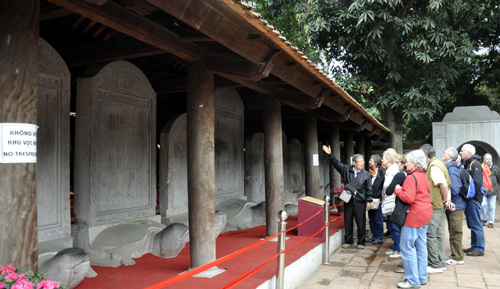 |
With their exceptional cultural and historical value, in early March 2010, 82 doctoral steles from the examinations under the Le and Mac dynasties (1442-1779) at the Temple of Literature - National University (Hanoi) were recognized by UNESCO as a World Documentary Heritage.
20. Wooden printing blocks of Buddhist scriptures at Vinh Nghiem Pagoda
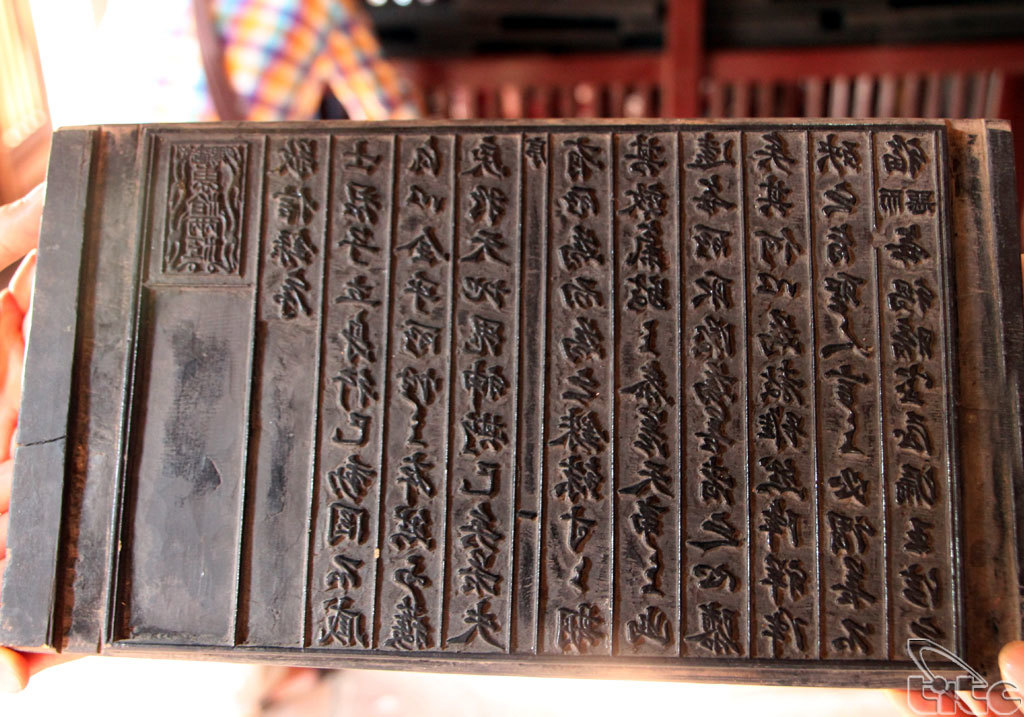 |
Vinh Nghiem Pagoda is known as a "Great Ancient Temple," the largest Buddhist center of the Tran Dynasty, and home to Chinese texts recognized by UNESCO in 2012.
21. Nguyen Dynasty Archives
 |
Imperial archives are documents of the dynasty that were "approved" by the emperor with red ink. The Nguyen Dynasty's imperial archives are administrative documents created during the state administration of the Nguyen Dynasty (1802-1945), the last dynasty in the history of feudal Vietnam. These include documents from central and local government agencies submitted to the emperor for approval, documents issued by the emperors, and some diplomatic documents and imperial poems and writings.
The Nguyen Dynasty's imperial archives were recognized by UNESCO as a World Documentary Heritage in 2014.
Mixed cultural heritage
22. Trang An Scenic Landscape Complex, Ninh Binh
 |
Trang An is one of the most beautiful and captivating karst tower landscapes in the world. The landscape is covered with lush forests and majestic conical towers reaching 200 meters in height, nestled in narrow, enclosed depressions surrounded by interconnected ridges and swamps linked by an underground stream system stretching up to 1 kilometer.
In addition, this area also boasts historical sites and scenic spots that have been classified by the Vietnamese Government as particularly important national monuments, such as the Trang An ecological tourist area, the Tam Coc - Bich Dong tourist area, Bai Dinh Pagoda, and the ancient capital of Hoa Lu.
On June 23, 2014, in Doha, with the unanimous agreement of the World Heritage Committee, the Trang An Scenic Landscape Complex officially became Vietnam's first mixed World Heritage site.
Source: https://www.baohoabinh.com.vn/237/176697/Tu-hao-voi-22-di-san-the-gioi-tai-Viet-Nam.htm



![[Photo] Two flights successfully landed and took off at Long Thanh Airport.](/_next/image?url=https%3A%2F%2Fvphoto.vietnam.vn%2Fthumb%2F1200x675%2Fvietnam%2Fresource%2FIMAGE%2F2025%2F12%2F15%2F1765808718882_ndo_br_img-8897-resize-5807-jpg.webp&w=3840&q=75)




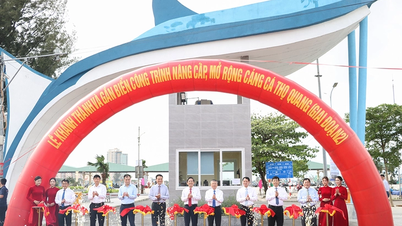







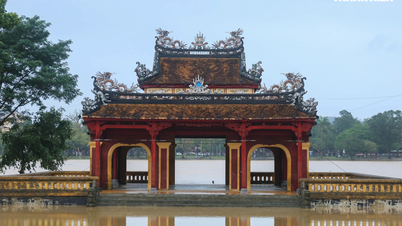


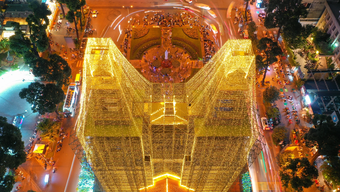





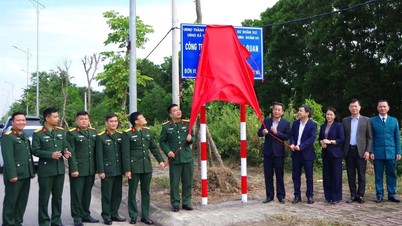


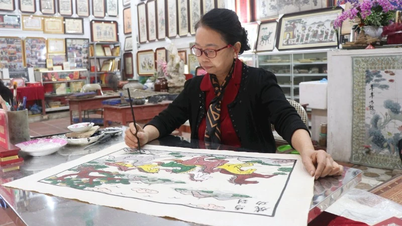















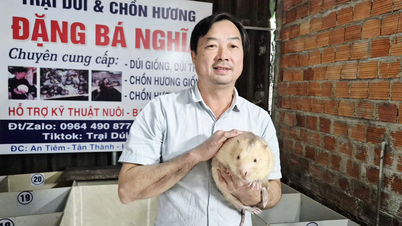



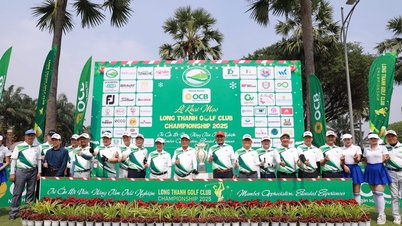







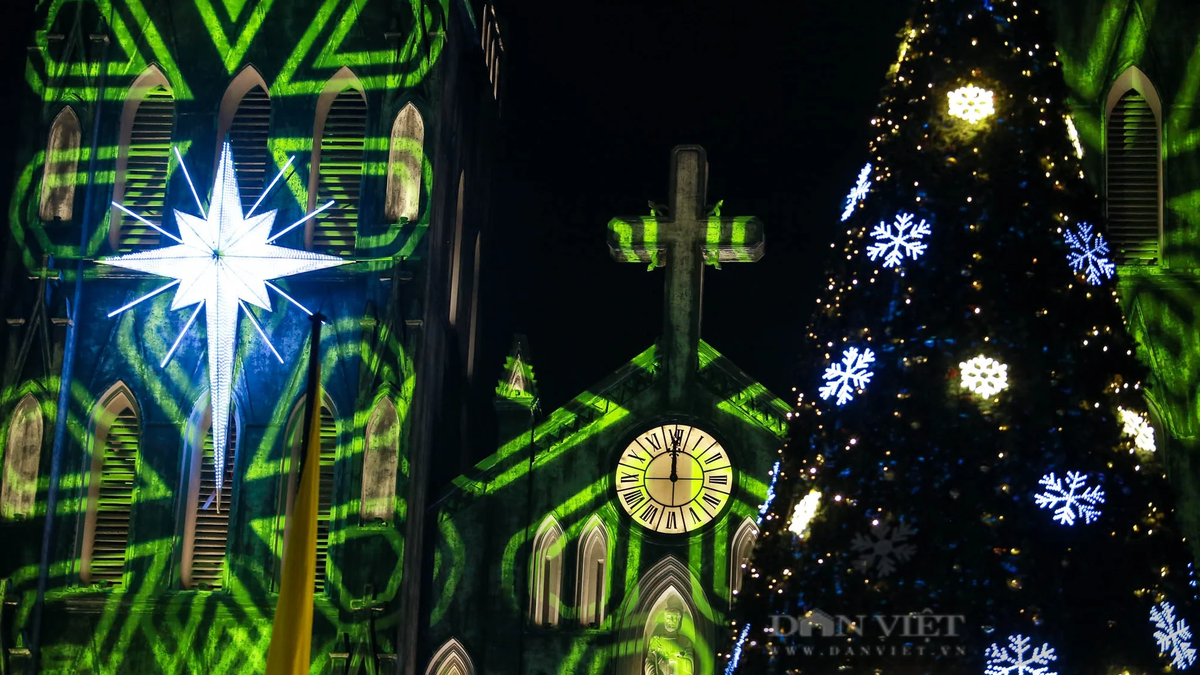



















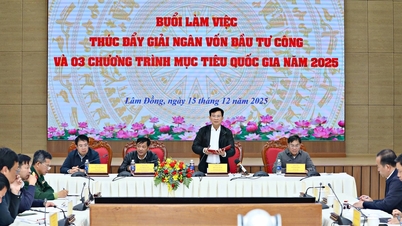

















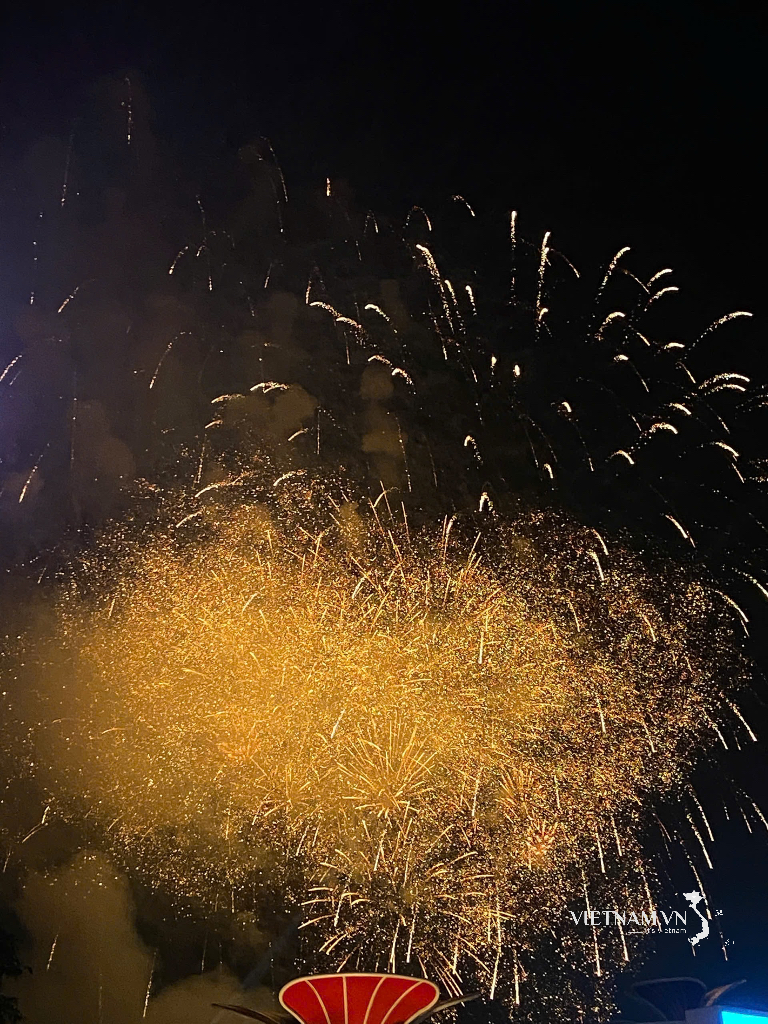
Comment (0)